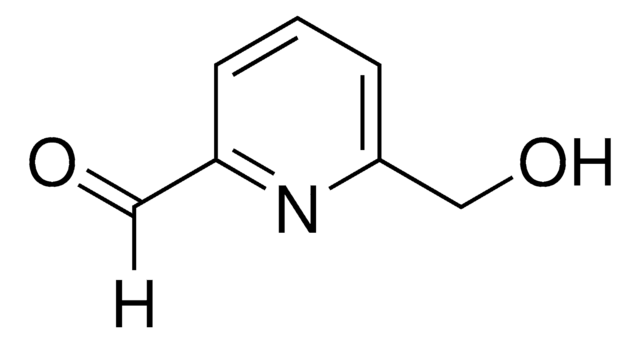345547
Cloruro de hidrógeno solution
4.0 M in dioxane
Iniciar sesiónpara Ver la Fijación de precios por contrato y de la organización
About This Item
Fórmula empírica (notación de Hill):
HCl
Número de CAS:
Peso molecular:
36.46
MDL number:
UNSPSC Code:
12352301
PubChem Substance ID:
NACRES:
NA.21
Productos recomendados
form
liquid
Quality Level
concentration
3.80-4.40 M (by NaOH, titration)
4.0 M in dioxane
density
1.05 g/mL at 25 °C
SMILES string
Cl
InChI
1S/ClH/h1H
InChI key
VEXZGXHMUGYJMC-UHFFFAOYSA-N
¿Está buscando productos similares? Visita Guía de comparación de productos
Categorías relacionadas
General description
La disolución de cloruro de hidrógeno contiene cloruro de hidrógeno 4,0 M en 1,4-dioxano como disolvente. Se utiliza habitualmente como reactivo de desprotección durante la desprotección del grupo terc-butoxicarbonilo (Boc) de varios aminoácidos y péptidos. Además, sirve como reactivo en varias reacciones de síntesis orgánica, como la síntesis de cloruros de N-9-fluorenilmetoxicarbonilo- (Fmoc) aminoácidos.
Application
La disolución de cloruro de hidrógeno (4,0 M en dioxano) se puede utilizar como:
- Reactivo para la desprotección del grupo de protección N-Boc de varios derivados heterocíclicos.
- Reactivo para la desprotección de los grupos protectores de polímeros. Por ejemplo, la desprotección del polímero protegido con éter bencílico.
- Iniciador de polimerización en combinación con ZnCl2 en la síntesis de poli(éter etil vinílico) terminado en formilo a partir de éter etil vinílico (EVE).
signalword
Danger
Hazard Classifications
Carc. 1B - Eye Irrit. 2 - Flam. Liq. 2 - Met. Corr. 1 - Skin Irrit. 2 - STOT SE 3
target_organs
Respiratory system
supp_hazards
Storage Class
3 - Flammable liquids
wgk_germany
WGK 3
flash_point_f
62.6 °F - closed cup
flash_point_c
17 °C - closed cup
Elija entre una de las versiones más recientes:
¿Ya tiene este producto?
Encuentre la documentación para los productos que ha comprado recientemente en la Biblioteca de documentos.
Los clientes también vieron
Synthesis of Chitosan-graft-Poly (vinyl ether) as a Thermoresponsive Water-Soluble Chitosan
Namikoshi T, et al.
Journal of Fiber Science and Technology, 75(12), 193-199 (2019)
Z L Neumann et al.
Journal of veterinary internal medicine, 29(6), 1584-1594 (2015-10-02)
Canine osteosarcoma (OS) is an aggressive sarcoma characterized by pathologic skeletal resorption and pulmonary metastases. A number of negative prognostic factors, including bone alkaline phosphatase, have been identified in dogs with OS, but the underlying biologic factors responsible for such
Brian W Simons et al.
The Journal of pathology, 235(3), 478-489 (2014-10-29)
Inflammation is associated with several diseases of the prostate including benign enlargement and cancer, but a causal relationship has not been established. Our objective was to characterize the prostate inflammatory microenvironment after infection with a human prostate-derived bacterial strain and
Anne Bouchut et al.
PloS one, 10(3), e0117966-e0117966 (2015-03-19)
Lysine acetylation is a reversible post-translational modification (PTM) that has been detected on thousands of proteins in nearly all cellular compartments. The role of this widespread PTM has yet to be fully elucidated, but can impact protein localization, interactions, activity
Jingjing Cao et al.
Journal of virology, 89(5), 2777-2791 (2014-12-30)
Microtubule transport of circovirus from the periphery of the cell to the nucleus is essential for viral replication in early infection. How the microtubule is recruited to the viral cargo remains unclear. In this study, we observed that circovirus trafficking
Nuestro equipo de científicos tiene experiencia en todas las áreas de investigación: Ciencias de la vida, Ciencia de los materiales, Síntesis química, Cromatografía, Analítica y muchas otras.
Póngase en contacto con el Servicio técnico





